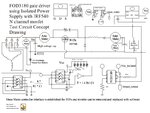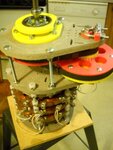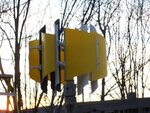BurnIt0017
Newbie level 6
videos of my MPPT project
Hi, I designing a MPPT controller to use with a small wind turbine. If the micro is removed from the MPPT a buck converter remain.
AC voltage from a permanent magnet alternator is converted to DC using a bridge rectifier. Some basic data of DC values at different RPM.
Recorded data without circuit at Vin:
3 phase Star, 12 coil per phase, phase to phase resistance = 7.7 ohms
RPM, Voc, Voc with cap at input
100, 25, 28
150, 36, 39
200, 50, 50
250, 60, 64
300, 73, 78
(all voltage measurements are DC values)
Problems encounter during first phase of testing:
When measure current the DMV would over heat and stop working. Searching for method to measure high current for long periods of time.
The 555 timer has positive and negative voltage spikes. Is there a solution to dampen the voltage spikes?
Searching for solutions, comments welcome.
I am using a 12 volt deep battery as a test load.
Hi, I designing a MPPT controller to use with a small wind turbine. If the micro is removed from the MPPT a buck converter remain.
AC voltage from a permanent magnet alternator is converted to DC using a bridge rectifier. Some basic data of DC values at different RPM.
Recorded data without circuit at Vin:
3 phase Star, 12 coil per phase, phase to phase resistance = 7.7 ohms
RPM, Voc, Voc with cap at input
100, 25, 28
150, 36, 39
200, 50, 50
250, 60, 64
300, 73, 78
(all voltage measurements are DC values)
Problems encounter during first phase of testing:
When measure current the DMV would over heat and stop working. Searching for method to measure high current for long periods of time.
The 555 timer has positive and negative voltage spikes. Is there a solution to dampen the voltage spikes?
Searching for solutions, comments welcome.
I am using a 12 volt deep battery as a test load.
Attachments
Last edited:


